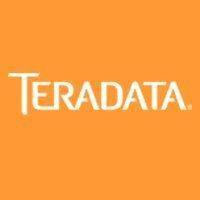

This series on the semantic web started with an introduction in Part I. In Part II, I made the business case for going semantic. Part III focused on complementary technologies. In Part IV, I provided a case study of how one company is already successfully reaping the benefits of the semantic web. In this final post in the series, I’ll take a look at what organizations can do right now to get ready for the semantic web.
Note that much hinges on type of organization. While conceptually quite similar, the specific things that a health care organization needs to do differ substantially from what a publisher needs to do. You’d never go into a hospital and ask for the latest Harry Potter book in Chinese, having it printed and bound while you wait. (David Siegel, author of Pull: The Power of the Semantic Web to Transform Your Business, sees a day in the future when that will actually be commonplace.) For more on the different needs and requirements of different industries, check out the agenda from the latest SemTech conference. Bottom line: One size certainly does not fit all.
Start Playing
While the semantic web is very much in its infancy (as are the technologies that will ultimately support it), it’s important to begin conceptualizing it. High-level planning is certainly part and parcel to this, but seeing some examples of semantic technologies in action will only increase excitement about the long, potentially arduous journey that your organization is about to take. One such example is Friend of a Friend (FOAF), a popular semantic application of that:
…uses RDF to describe the relationships people have to other people and the “things” around them. FOAF permits intelligent agents to make sense of the thousands of connections people have with each other, their jobs and the items important to their lives; connections that may or may not be enumerated in searches using traditional web search engines. Because the connections are so vast in number, human interpretation of the information may not be the best way of analyzing them.
As mentioned previously in this series, Google Squared is another semantic tool that people can access immediately to get their arms around what is admittedly a pretty big paradigm shift.
Get Your Data Ready
It seems to me that the biggest opponents of the semantic have good reason for their skepticism: their data is in tatters. Organizations that cannot manage their structured data are in dire straights, for doing so is much easier than managing its unstructured brethren. Bad data is bad data regardless of context; contextualizing millions of records is no secret sauce. Take data quality and governance seriously now and your odds of semantic success will skyrocket.
Understand that Your Mileage May Vary
As the Best Buy case study shows, results from semantic efforts can be quite impressive. However, setting the bar too high is never a good idea–especially in the short term. Temper expectations, especially in the short term. Semantic technologies will have a network effect (read: more will benefit as more people and organizations use them). This is just like each incarnation of the web and plenty of technologies before that. Do you think that Amazon.com would have done so well if only a handful of people shopped online? Of course not. This will take time.
Expect Resistance but Resist Opponents
Organizations that want to embrace the semantic web ultimately will–and will be successful for their efforts. While there’s a great deal of work to be done, progress is made on many projects on a daily basis. Balancing the short term with the long term has always been a bedrock of intelligent management. It’s just plain silly to expect everyone to be on board with things such as :
- what to do
- what not to do
- how to do it
- when to do it
Even in progressive organizations, people will differ. Legitimate objections are one thing; carping and outward negativity are another. Ensure that your organization is staffed with the right type of forward-thinking folks.
Monitor and Learn from Other Projects
It’s silly to try to pay attention to all things semantic. However, keeping an eye on different–and successful–projects is just plain smart. While each semantic project may have its own path, web sites, and conferences, we can learn from other examples of semantic projects.
Technology Isn’t Enough
In researching this series, perhaps the best description of the semantic web comes from ChurchCrunch:
‘contextualization’ of data and technologies: Imagine the web ‘knowing’ intimately who you are without it asking or receiving any direct input from the user or the visitor.
As I channel my inner geek, this is a very cool and powerful goal. It won’t happen over night but, rest assured, it will happen. The question is: Will your organization be ready to take advantage of it?
In Siegel’s words, “The 21st century company will be a pull company. That is, they will set up their products, services, and information to be pulled by the customer as needed. Many of today’s IT departments and CIOs don’t get this. Semantic technologies will play an important role, because they are much more agile. But in the end, if you don’t change the company’s mindset about shifting from push to pull, all the semantic software in the world won’t save you.”
Feedback
What say you?
Read more at MIKE2.0: The Open Source Standard for Information Management







